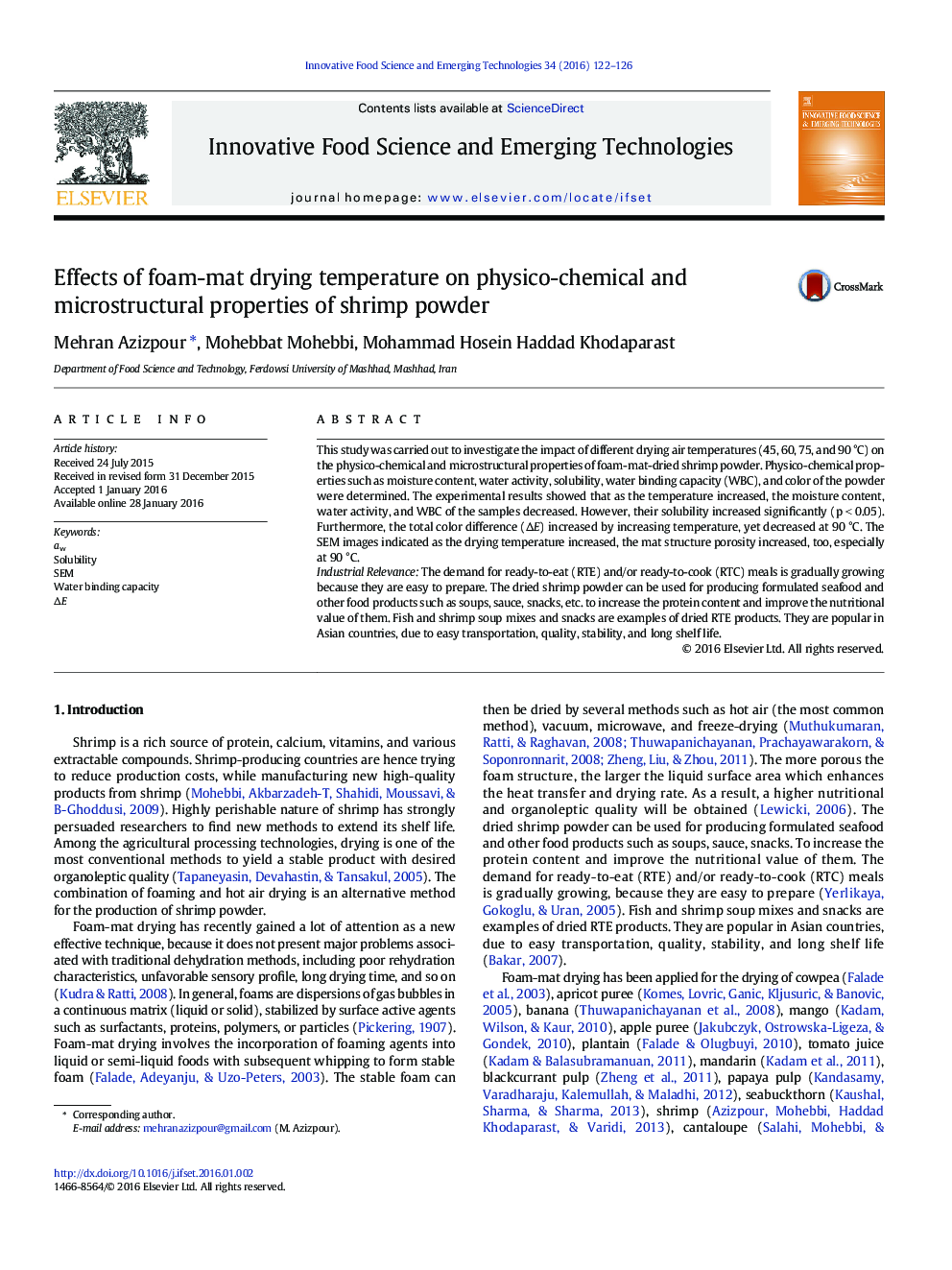| Article ID | Journal | Published Year | Pages | File Type |
|---|---|---|---|---|
| 2086361 | Innovative Food Science & Emerging Technologies | 2016 | 5 Pages |
•This study demonstrated that the shrimp powder can be successfully produced.•The solubility was increased by increasing drying temperature, unlike other properties.•The color increased by increasing temperature, yet decreased at 90 °C.•The SEM indicated as the drying temperature increased, the structure porosity increased too.
This study was carried out to investigate the impact of different drying air temperatures (45, 60, 75, and 90 °C) on the physico-chemical and microstructural properties of foam-mat-dried shrimp powder. Physico-chemical properties such as moisture content, water activity, solubility, water binding capacity (WBC), and color of the powder were determined. The experimental results showed that as the temperature increased, the moisture content, water activity, and WBC of the samples decreased. However, their solubility increased significantly (p < 0.05). Furthermore, the total color difference (ΔE) increased by increasing temperature, yet decreased at 90 °C. The SEM images indicated as the drying temperature increased, the mat structure porosity increased, too, especially at 90 °C.Industrial RelevanceThe demand for ready-to-eat (RTE) and/or ready-to-cook (RTC) meals is gradually growing because they are easy to prepare. The dried shrimp powder can be used for producing formulated seafood and other food products such as soups, sauce, snacks, etc. to increase the protein content and improve the nutritional value of them. Fish and shrimp soup mixes and snacks are examples of dried RTE products. They are popular in Asian countries, due to easy transportation, quality, stability, and long shelf life.
